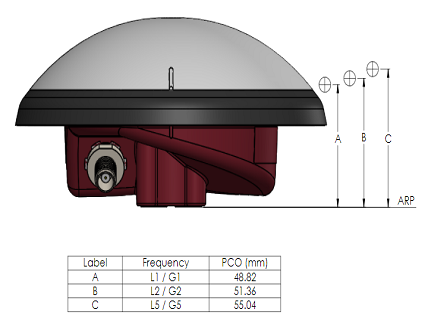
Geo++ calibration to VeroStar VSP6037L Antenna makes it ideal for all rover applications
Tallysman Wireless Inc announced that its full GNSS and L-band correction coverage VeroStar VSP6037L Antenna has been calibrated by Geo++ — the industry-leading calibration facility for GNSS antennas. Geo++ calibration enables the VeroStar antenna to be interoperable with all high-precision Geo++ calibrated antennas.
The Geo++ absolute calibration is carried out on each antenna and estimates, for all available GNSS signals, both the Phase Center Offset (PCO) and the Phase Center Variation (PCV). The Geo++ type calibration combines the estimates of the absolute calibration of five VSP6037L antennas to calculate the average PCO and the average PCV as a function of azimuth and zenith angles. The calibration process also computes the root mean squared (RMS) of the PCV fit.
Tallysman’s modern design and manufacturing processes ensure that the VeroStar family of precision antennas provides repeatable results from unit to unit. This has been confirmed by the Geo++ type mean calibration results. The RMS of the PCV at all azimuth angles is typically 0.05 mm for zenith angles from 0° to ~70° and typically 0.08 mm at the horizon.
VeroStar antennas are designed for survey rover or dynamic applications, which may not consider the antenna’s azimuthal orientation in the position estimates. The Geo++ calibration provides a NOAZI PCV estimate for each signal, where all the azimuthal PCV values are averaged at each zenith angle. This estimate is used to improve position estimate accuracy without azimuthal orientation. The derived NOAZI PCV of the VSP6037L for all zenith angles is typically less than 2 mm and at most 3 mm, with an RMS of less than 0.05 mm. Geo++ calibration enables the VSP6037L antenna to achieve accurate and repeatable position estimates and to be interoperable with other high-precision antennas, making it ideal for all rover applications.


















